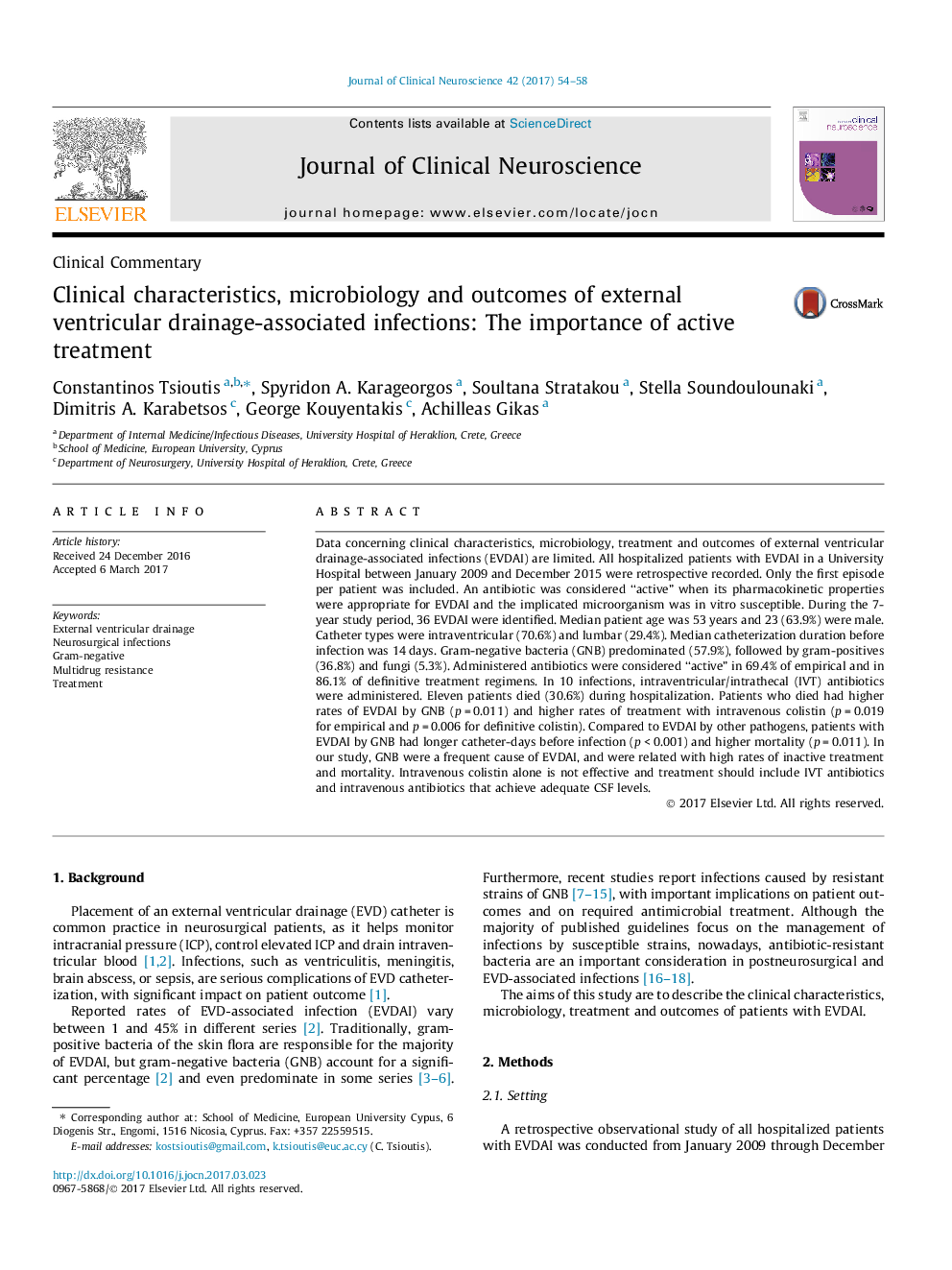| کد مقاله | کد نشریه | سال انتشار | مقاله انگلیسی | نسخه تمام متن |
|---|---|---|---|---|
| 5629737 | 1580274 | 2017 | 5 صفحه PDF | دانلود رایگان |
- Retrospective study of external ventricular drainage-associated infections (EVDAI).
- Gram-negative bacteria (GNB) were the most frequent pathogens (57.9%).
- Definitive treatment was considered “active” in 86.1% of infections.
- Patients who died had higher rates of GNB and higher rates of colistin treatment.
- Patients with GNB had longer catheter-days and higher mortality.
Data concerning clinical characteristics, microbiology, treatment and outcomes of external ventricular drainage-associated infections (EVDAI) are limited. All hospitalized patients with EVDAI in a University Hospital between January 2009 and December 2015 were retrospective recorded. Only the first episode per patient was included. An antibiotic was considered “active” when its pharmacokinetic properties were appropriate for EVDAI and the implicated microorganism was in vitro susceptible. During the 7-year study period, 36 EVDAI were identified. Median patient age was 53 years and 23 (63.9%) were male. Catheter types were intraventricular (70.6%) and lumbar (29.4%). Median catheterization duration before infection was 14 days. Gram-negative bacteria (GNB) predominated (57.9%), followed by gram-positives (36.8%) and fungi (5.3%). Administered antibiotics were considered “active” in 69.4% of empirical and in 86.1% of definitive treatment regimens. In 10 infections, intraventricular/intrathecal (IVT) antibiotics were administered. Eleven patients died (30.6%) during hospitalization. Patients who died had higher rates of EVDAI by GNB (p = 0.011) and higher rates of treatment with intravenous colistin (p = 0.019 for empirical and p = 0.006 for definitive colistin). Compared to EVDAI by other pathogens, patients with EVDAI by GNB had longer catheter-days before infection (p < 0.001) and higher mortality (p = 0.011). In our study, GNB were a frequent cause of EVDAI, and were related with high rates of inactive treatment and mortality. Intravenous colistin alone is not effective and treatment should include IVT antibiotics and intravenous antibiotics that achieve adequate CSF levels.
Journal: Journal of Clinical Neuroscience - Volume 42, August 2017, Pages 54-58
